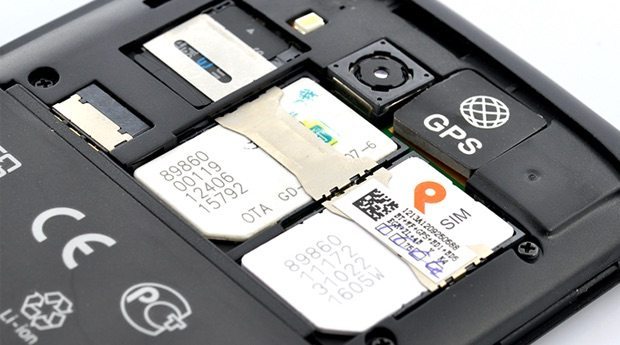
What is Dual SIM or Multi SIM in a Mobile Phone?
Before talking about dual SIM features, let’s define what a SIM card is. SIM stands for Subscriber Identity Module. It is that little card that is inserted into almost every mobile phone. Its primary function is to identify you and participate in the authentication process that provides access to a GSM mobile network. Without a SIM card inserted into the slot of a phone, you cannot make calls, send SMS, or use the mobile data network.
To change networks when you are traveling or moving your account, you need to swap out the SIM card and put in a new SIM card. In some cases, people may want to use two or more SIM cards to have access to two or more mobile network accounts. And for convenience, instead of swapping out the SIM Cards, they use a phone with two or more slots. The phone helps subscribers manage and select the mobile network account they want to use. These phones with two or more SIM card slots are identified as “dual SIM” or “multi SIM” devices.
How to Detect Dual SIM Devices
WURFL by ScientiaMobile is a device detection solution capable of identifying multi SIM devices. In addition to identifying the device model, WURFL can return the multi-SIM capabilities of the device. WURFL will return a value that indicates the number of SIM slots available on the device. For example, when identifying the Samsung Galaxy J7 2015, WURFL will return “2” slots for the multi-SIM capability.
In the multi-SIM capability, WURFL includes SIM card slots with standby functions as well. For example if a device has one dedicated sim card slot and a hybrid micro SD/SIM card slot, we return `2`. If a device has one dedicated SIM card slot and e-SIM support, and only one can be used (Eg. Google Pixel) we return `1`. Devices that only support e-SIM/CDMA, we return `1`.
Why Use Multi-SIM in Advertising, Fraud Prevention
Instantly knowing the multi-SIM capability of a device is useful to many use cases, including Advertising and Fraud Prevention. The multi-SIM capability is indicative of a business traveler segment, particularly if you are seeing that multi-SIM device in a country that does not have many multi-SIM users. For example, in the U.K. only 15% of smartphones have multi-SIM. So if an advertiser were targeting on the business traveler segment in the UK (or Europe), they could use the multi-SIM WURFL capability to identify this affluent segment.
Multi-SIM knowledge is also valuable in fraud prevention. When identifying suspect devices, it is good to know that a one device (i.e. a single IMEI) may have two IP addresses because they subscribe to two mobile new networks. Developers and data scientists can work multi-SIM into their security algorithms and artificial intelligence that may be detecting potential fraud.
Top Countries Using Dual SIM or Multi SIM Phones
Multi-SIM devices represent the highest percent of usage in developing countries. Kenya, India, Bangladesh, and Indonesia all have over 80% of smartphone usage coming from devices capable of multi-SIM.

Top Dual SIM Smartphones 2018 Q3
Samsung Galaxy S7 Edge is the most popular multi-SIM smartphone during 2018 Q3 with 1.53% of usage. Samsung and Huawei smartphones dominate the top 10 multi-SIM.

Multi-SIM Usage in World’s Largest Countries
When looking at the world’s largest countries as measured by smartphone subscribers, many of the largest countries have a significant percentage of devices capable of multi SIM capability. These figures do not indicate the actual use of multiple SIMs, rather they indicate devices that are capable of using multiple SIMs. China, India , Brazil, Russia, and Indonesia all have significant multi-SIM device usage. In China, the world’s largest market, 64% of its mobile smartphones have multi-SIM capability.

Price of Multi-SIM Devices
Because demand for multi-SIM devices is strongest in developing countries, the dual SIM feature is more frequently found in lower-priced smartphones. The average Manufacturer’s Suggested Retail Price (MSRP) of a multi-SIM smartphone during 2018 Q3 is $324. In contrast, the average MSRP of all smartphones is $576, indicating that multi-SIM is a common feature on budget-oriented smartphones.
The average MSRP of multi-SIM smartphones has increased from $243 in 2015 to $324 in 2018. Multi-SIM is increasingly included in higher-end devices, raising the average MSRP. While 87% of multi-SIM smartphone usage occurs on devices under $500, premium device manufacturers like Apple are starting to offer multi-SIM features. For example, Apple has included 2 SIM slots on their new iPhone XS, iPhone XS Max, and iPhone XR. These expensive and popular devices will continue to pull up the average MSRP in future months.
Learn more about multi-SIM devices by subscribing to MOVR. If you are interested in using WURFL, please contact us.









